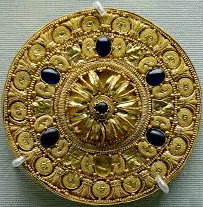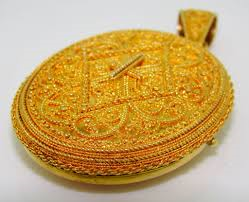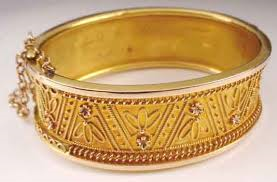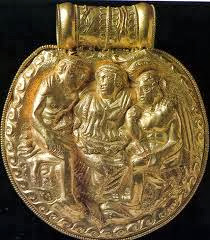 Ear-stud decorated with a rosette surrounded by concentric bands. Gold with vitreous glass paste insets, 530–480 BC. | The Etruscan civilization dominated the north of what is now Italy from about 700 BCE until about 300 BCE. It is known that they had a language not related to that of the Italic tribes. Etruscan kings ruled in Rome and other Italian city states.  |  |
 | Their arts flourished, including outstanding goldsmithing. The Etruscans took great pleasure in wearing ostentatious gold jewellery. Etruscan metalworkers produced many fine items not only in gold, but also in bronze and silver. The gold jewellery was often ornamented with filigree (fine wire) and granulation (tiny gold granules) formed into patterns. This latter technique has been mimicked in recent times but modern goldsmiths have never achieved the powder-fine granules of the Etruscan metalworkers. |  |
 | Etruscan goldsmiths learned the basic technique of granulation from the Phoenicians, but the Etruscans took it to new heights of excellence and delicacy through extreme miniaturization. Granulation refers to the side by side application of tiny beads of gold. Twisted, or 'corded' gold wirework was also applied to jewels in the Etruscan style. Modern jewelers have not been able to duplicate the skill and fine precision of the ancient craftsmen. |  |
 | Around 550 BC Etruscans started to engrave semi-precious stones like carnelian. Gem carving reached its apex from 480-300 BC.  |  |
 |  |  |  |
 |  |  |

No comments:
Post a Comment